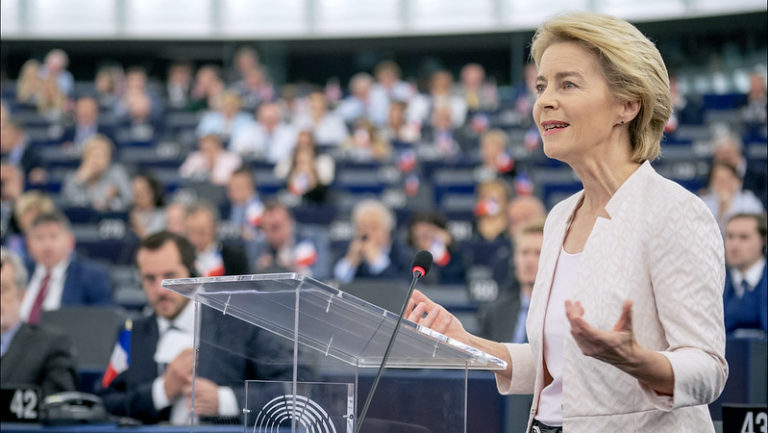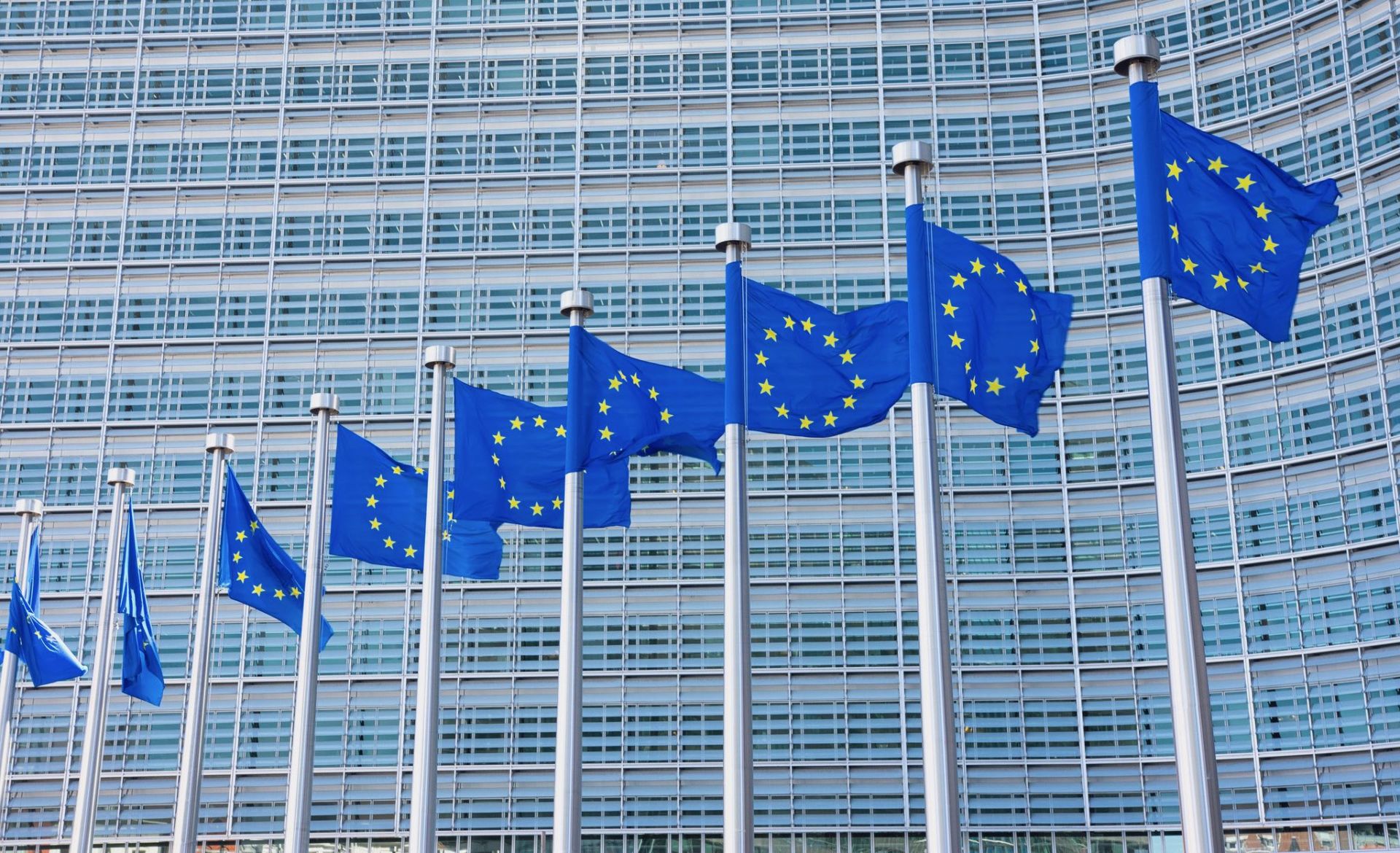European Union policymakers on Wednesday, July 14, unveiled an ambitious plan to tackle climate change, laying out a roadmap to turn Europe’s bold emissions goals into concrete commitments and legislative action.
The ‘Fit for 55’ plan aims to cut carbon emissions across the EU by 55% from 1990 levels by 2030. The European Union Commission has presented 12 legislative proposals, eight of which are more ambitious updates of existing EU legislation, primarily focused upon the transport, construction and trading industries.
The landmark proposals have been applauded by environmental groups as a bold step in the fight against climate change, however it remains unclear how many of the recommendations would remain in place through a process that may take years whilst requiring support from the fractious 27 European member states.
By aiming to make polluting more expensive and green options more attractive to the 25 million businesses and half-a-billion people that make up the European Union, the proposals put forward by the EU will require sweeping changes across numerous industries. When announcing the package, European Commission President Ursula von der Leyen stated that “CO2 must have a price. This price must be so high that people choose the clean and environmentally friendly solution.”

Whilst current regulations are tailored towards a 40% emissions cut target, the EU Commission, the executive body of the EU, has said that the landmark climate package will mean more aggressive national goals for all EU states. Intended to share the burden of achieving the 55% emissions cut across Europe by 2030, the revised commitments for each nation will be calculated on a scale based upon per-capita economic output.
Countries hit hardest by the aggressive emissions targets will be Sweden, Finland, Germany, Denmark, and Luxembourg, whose current targets of 38% to 40% will be raised to 50%. Essentially every nation will be expected to improve their current emissions targets, including smaller countries such as Bulgaria, whose current target of simply not increasing its emissions by 2030 will be required to cut them by 10%
The bill will raise import charges at EU borders for construction materials including cement, steel, and aluminium, whilst installing taxes on aviation and shipping fuels that avoid taxation under current EU regulations. The cost of carbon emissions will also be raised across the heating, transport, and manufacturing sectors.—
“We’re going to ask a lot of our citizens. We’re also going to ask a lot of our industries, but we do it for a good cause,” EU climate policy chief Frans Timmermans said, adding that the EU is pushing for such bold measures “to give humanity a fighting chance”.
One of the most ambitious measures set by the bill will be to significantly tighten emissions targets for automobile companies, aiming to end the sale of petrol and diesel cars in the EU by 2035. The transport and construction industries, the primary sectors impacted by the proposals, contribute approximately 25% and 36% of EU emissions, respectively.
It should be noted that the cuts were largely expected by the industry. Many automobile manufacturers have already implemented plans to cut combustion engine production in anticipation of such measures, including industry giant Volkswagen, who last month announced it would end sales of all petrol and diesel combustion engines in Europe by 2035.
The road ahead is going to be difficult. Currently, the European Union has cut emissions by 24% from 1990 levels, yet with reductions in coal reliance already actioned across much of Europe, forcing further cuts will be a challenge and will require bold transitions across numerous industries. Illustrating the broad scope of the proposals set out on July 14, EU nations will also be required to develop forest and grasslands to further tackle the large emissions vacuum that exists between the EU’s current status and its 55% target.
The EU is host to the largest carbon market in the world, the EU Emissions Trading System (ETS), and will attempt an ambitious overhaul with the installation of a broader carbon market system based on tighter rules and greater control over prices. The move will force the shipping industry to pay for its C02 emissions for the first time, as well as raising emissions costs for power plants, factories and airlines.
In an attempt to alleviate some of the tangible costs that the legislation will enforce on EU citizens, von der Leyen says a portion of the revenues raised from the new taxation will be placed in a fund for the fuel bills of low-income households, assuring that the proposals “will make sure households with small incomes get support for mobility, driving and heating”.
However, critics have cast doubts over both the potential efficacy of the proposals, as well as their ability to pass through the numerous bureaucratic stages to become EU policy. The legislation will require approval by all 27 EU member states, as well as passage through the European parliament.
Related Articles: The Climate Emergency: Can Europe Be a Model for the World? | Can the New US and EU Climate Goals Save the World?
The dynamic between the promotion of aggressive climate policies and pushback from EU member nations will be a decisive factor to the establishment of the ‘Fit for 55’ transition. The number of people involved, many with vested interests in pursuing business-as-usual, means that the process is likely to take several years. In particular, the bill is expected to encounter firm opposition from industry lobbying efforts, with the legislation looking to place significant new burdens across key industries and major companies.
The European Commission’s proposal to create a trading scheme to cut emissions caused by the transport and construction industries has found particular opposition from those that feel it will trigger a rise in household energy bills and petrol prices. Von der Leyen has touted the creation of the fund to help low-income houses with costs that they are not able to face. Bloomberg reports that this fund will comprise an estimated 72 billion euros coming from the expanded carbon emissions market, primarily from the raised regulations on transport and heating fuels.
The European Commission already faces a battle to convince EU member states of the efficacy of the proposals. Hungarian Prime Minister Viktor Orban’s government, currently at odds with the EU over recent domestic LGBTQ crackdowns, is an early critic of the plans. Labelling the revised regulations on real estate and automobiles as “untenable and unacceptable”, Hungarian Cabinet Minister Gergely Gulyas told reporters on July 15 that the proposals would destroy the results of the nation’s utility price cuts.
The proposed fund is to be set up with money from the EU’s budget, but as its revenues will increasingly come from the ETS, the value will be dependent on carbon market prices. The Polish Economic Institute has claimed that the planned emissions trading program for the heating and automobile industries may cost European households up to 1.1 trillion euros by 2040, while, according to Bloomberg NEF, the ‘Fit for 55’ proposals will call for approximately 1.2 trillion euros of investment into clean energy by 2030.
The chairman of the European Parliament’s environment committee, Pascal Confin, has described the plans for the emissions trading system (ETS) as “political suicide”, adding that those hardest hit by the proposals would be people in regions with poor public transport and tenants who may struggle to pay for energy efficient upgrades to their homes.
Confin, a close political ally of French President Macron, outlined his doubts over the proposal by stating that they would cause “higher carbon prices and no alternatives… people are ready to change, but in order to change they need alternatives, otherwise they are trapped.”
This perspective was echoed by Dutch Green MEP Bas Eickhout, who claimed that “whether you like it or not, the European Union is weak, weakly equipped [in this area]. Social compensation comes down to a tax system and that is all national competence, so this entire construct needs much more national responsibility”. Eickhout warned that the net revenues from the social climate fund would end up being “very low”.
The proposed system has been defended by EU officials who claim that a cap-and-trade system is the best way to tackle the EU’s largest polluting sectors, building and transport, which conservative estimates place at around 58% of the bloc’s greenhouse gas emission totals.
One tool that has proven its worth is the emissions trading system. It says those who emit CO2 must pay for it,
— European Commission President Ursula von der Leyen.
The Road Ahead for the European Union
By raising emissions goals across the board, the proposals have encountered expected early pushback. Whilst more indigent states will likely seek guarantees of support through a costly transition phase and potential reductions in measures, other nations see ‘Fit for 55’ as a crucial and potentially-innovative shift towards climate change action.
Danish climate and energy minister Dan Jorgensen claims that the legislation can serve as a model as it shows other key nations that “it is possible to both set ambitious goals and introduce the concrete necessary measures to reach them”. This perspective was echoed by von der Leyen, who defended the aggressive policy measures by pointing to Europe as “the first continent to declare to be climate neutral in 2050, and now we are the very first ones to put a concrete roadmap on the table”.
The EU produces just 8% of global emissions, but perceives its plan as a world-leading strategy that will influence other major economies to follow suit. It is relying on the so-called ‘Brussels effect’ identified by Finnish economist Anu Bradford, showing that historically the rest of the world may follow suit, in line with the internal progress achieved within the EU. While possibly wishful thinking in this instance considering the debates that have already surfaced just days after the proposals’ announcement, the economic push that results from the EU’s stature as a major export market could allow the ‘Fit for 55’ plan to play a pivotal role in the push for climate action.
With the annual United Nations climate conference, the COP26, setting the stage for key nations to try and agree long-term emissions cuts in November of this year, the EU hopes the example set by the bill will prompt further climate action commitments. The aggressive policy measures come at a key stage for the global fight against climate change, as scientists warn that net-zero emissions must be reached by 2050 to prevent catastrophic climate change consequences.
One can only hope that the ambitious yet necessary proposals won’t become bogged down in the years-long bureaucratic stages and truculent debates that already appear to have set up barriers to the ‘Fit for 55’ plan. While it is clear that the short-termism that has dominated the climate debate so far must be set aside, inevitable challenges will almost certainly become a decisive factor in this latest saga of the fight for climate action.
Editor’s Note: The opinions expressed here by Impakter.com columnists are their own, not those of Impakter.com. — In the Featured Photo: European Union Flags. Featured Photo Credit: Kyle Wagaman.









